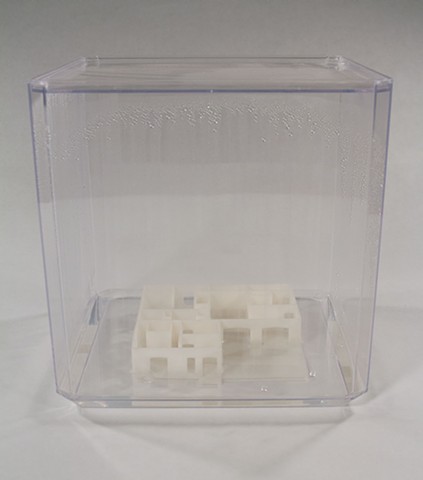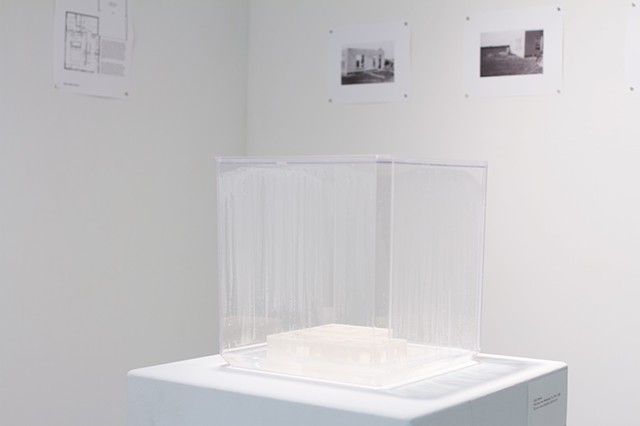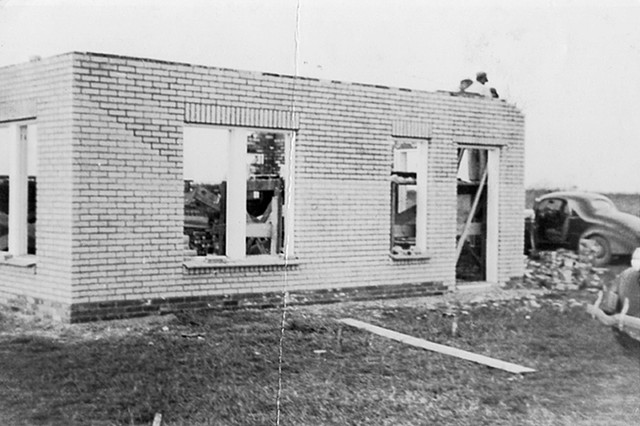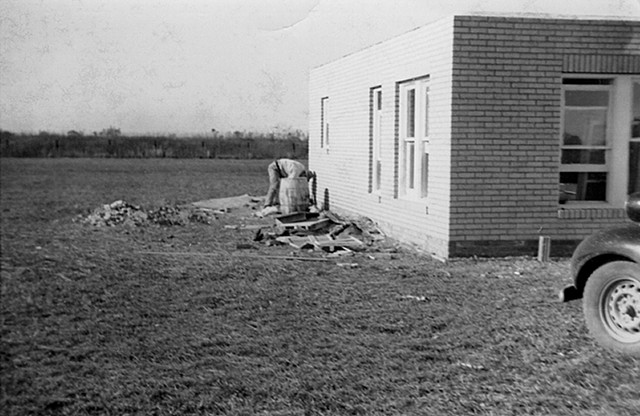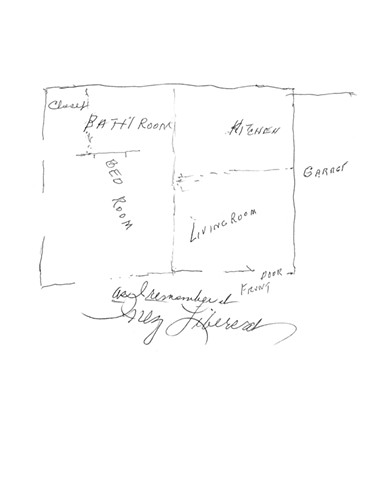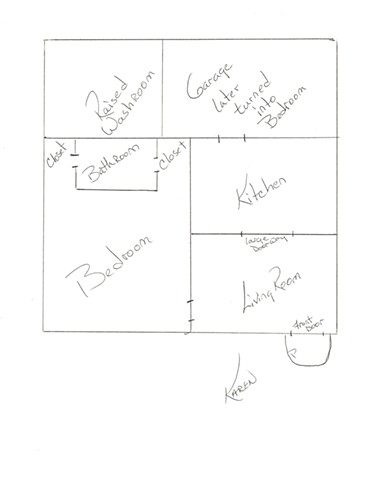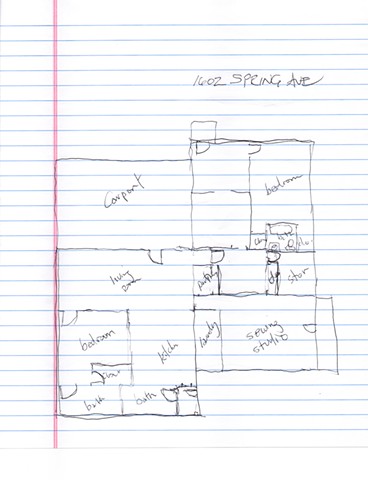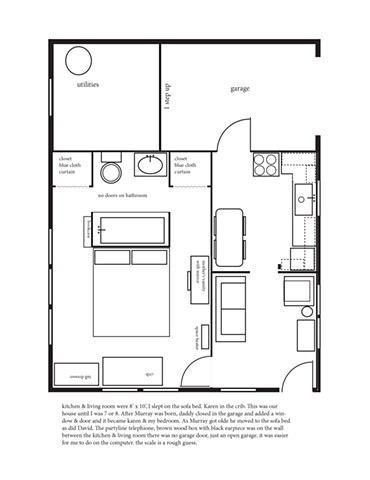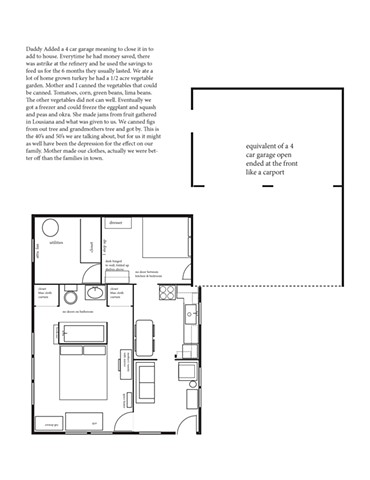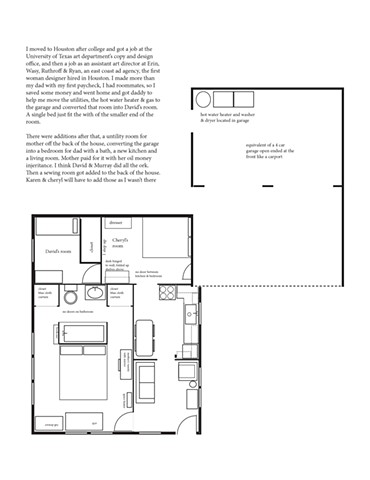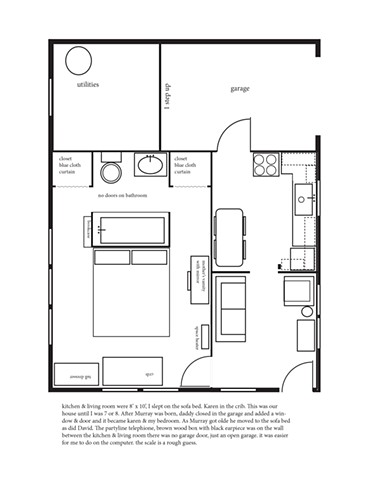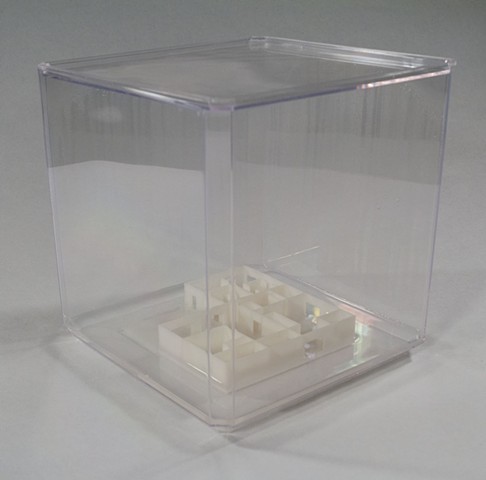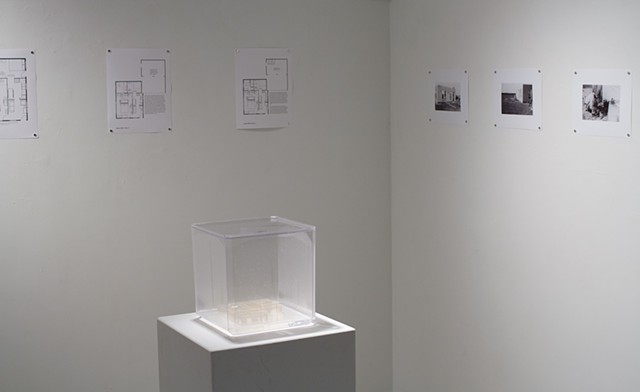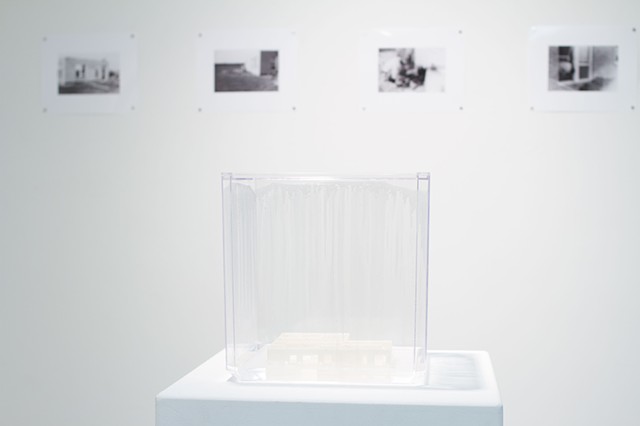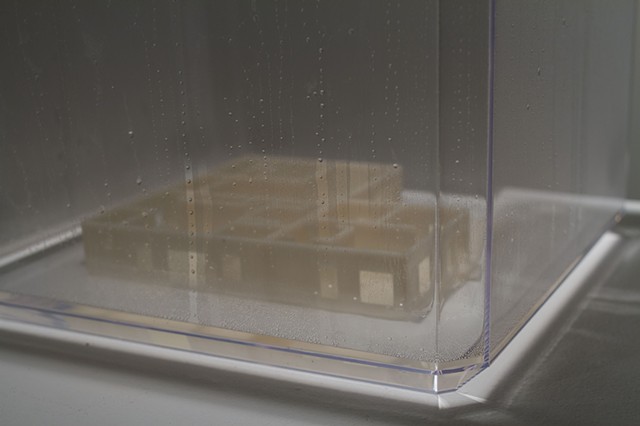Hurricane House
I explore home as a metaphor and symbol for belonging, identity and receptacle for cultural meaning. I created a project about my grandmother’s home in east Texas that was destroyed in Hurricane Rita in 2005. Hurricane House is a 3D print of a small-scale model of the house created from my father and his siblings’ floor plans drawn from memory. I compiled all of their memory plans into a 3D render and created a resin print of the house and placed it inside of a Plexiglas box filled with water. The water condenses and drips down the sides, preserving Hurricane House within a permanent storm state.
With Hurricane House, I am interested in the collective recollection of a meaningful space and how the memory of the space informs and changes the actual dimensions of the mental space. Object Oriented Ontology and New Materialist Jane Bennett’s theories of thing power and distributive agency provide a new perspective on the relationship of things: the storm, my family, the house and the objects within it as an agency of assemblage. Bennett’s ideas of “thing power” and “distributive agency” provides another perspective on 1) the things (humans, house, objects in house), 2) the dynamic relationships and interaction between the things (physical and remembered), 3) the vitality or forces that affected the things (storm, hoarding, construction/destruction) and 4) the paradox of the density of objects. Additivism provides another layer of reflection on the quality of the 3D printed object and the ways it questions materiality, authenticity. The digital sterile material of the 3D print and its small scale, stands in contrast to the weight of things and their remembered heavy dimensions. What happens when we decentralize the narrative using Bogost’s “flat ontology” to look at the experience of trauma to a home and the variation in human response to the call of things and subsequent loss of things? How can a speculative perspective give agency and vitality to the objects lost, represent imagined things and give form to the forces of destruction and the human interactions with them?
